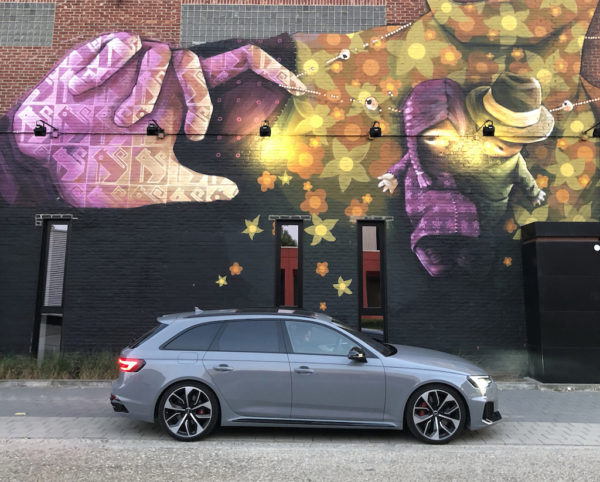Floods, wildfires, … the consequences of global warming are disastrous. But there are also less obvious consequences. What if we soon won’t be able to drink wine or champagne like we used to? The real possibility exists that it will come to that, if we don’t act immediately. To find out more, we went to the Champagne region. Of course with an environmentally friendly car: the fully electric Volvo C40 Recharge.
Text: Anja Van Der Borght – Photos WOWwatchers.com

Frederic Panaïotis, cellar master at Maison Ruinart.
“A climate warming of just 1°C already disrupts the natural ripening process of the grape and can have a huge impact on the texture and aromas of the wines,”
“A climate warming of just 1°C already disrupts the natural ripening process of the grape and can have a huge impact on the texture and aromas of the wines,” Frederic Panaïotis, cellar master at Maison Ruinart, says. “For several years now, the grapes in the Champagne region have been ripening faster and the harvest has started earlier and earlier in the year. In thirty years, the average temperature has increased by 1.3°C. It’s the symptom of a broader, global climate crisis that can clearly fritter away some of life’s pleasures. Our parcel of blue Pinot meunier grapes was spared frost damage in 2020 but some vineyards on higher grounds recorded losses of as much as 80 percent. Fortunately, Maison Ruinart has enough barrels of wine in stock to survive such a disastrous year, “but a second time would mean our death”, Frederic says. It is survival instincts that prompted Maison Ruinart and other champagne houses to start actively protecting the environment through sustainable winemaking practices that promote biodiversity. To raise the issue with a wider public, Ruinart partnered with Argentine contemporary artist Tomás Saraceno. He came up with ‘Aerocene for Ruinart’, a digital sculpture that you can only admire on site at the Ruinart estate via the Aerocene App, and which was created by means of an enormous black air pocket that depicts climate warming. Via a screen, you can also watch a film of the creation.`





Electric travelling – the verdict
Nearby destinations with an electric car are achievable, especially with cars like the comfortable Volvo C40 Recharge SUV with an official driving range of 440 kilometers. Plan in advance where you can charge near your accommodation and always take into account enough extra time to find a free and functioning charge point. We came across many faulty charging stations in the Champagne region. Travelling with an electric car is not quite the car journey we are used to, but fortunately the evolution keeps things moving!
Unesco World Heritage
In the meantime, the drink of the gods flows abundantly during tastings and cellar visits at the numerous champagne domains. The prestigious Avenue de Champagne – a Unesco World Heritage Site – in the champagne capital Épernay is an absolute must for a stroll. If only to admire the stately architecture of the town hall and champagne houses like Moët & Chandon, Boizel and Pol Roger. Below street level is a maze of tunnels carved into the chalk floor where champagne bottles lie to mature. These are the cellars you can visit. Either you make an appointment in advance or you visit a champagne house and you can sign up for various tastings, a cellar visit or just a glass of your choice, with or without appetizers. At champagne house Mercier, an electric train even takes you through the tunnels. Other attractions include the magnificent Gabrielle-Dorziat theater in Louis XV style, built in the early 20th century and named after the famous actress of the same name from Épernay. On the way to the Eglise Notre-Dame, Épernay’s main church, you’ll encounter Le Portail Saint-Martin, a Renaissance-style gate left over from the old Saint-Martin church and one of the town’s oldest historical monuments. If you take a drive around Épernay through the rolling vineyards, you will see another religious building in the distance. It is the Notre-Dame Cathedral of Reims, a gothic masterpiece and just like the Abbey of Saint-Remi, the Palace of Tau and the Colline Saint Nicaise also a Unesco World Heritage Site. A champagne-based bellini cocktail while enjoying the view of the cathedral…. our minds wander to the days when kings were crowned here.



Champagne festivities
After a two-year hiatus due to the Covid pandemic, this year on July 30 and 31, 2022, you can once again attend the Route du Champagne en Fête. This public event, created by local winegrowers in 1995, traditionally highlights the champagnes of the southern Champagne region of Côte des Bar and brings to life fifteen champagne cellars and six villages on the left bank of the Aube. Champagne houses open their doors so that champagne lovers can taste their bubbles for free. For 30 euros you can buy a glass and, with a map in your hand, go and discover them. The Côte des Bar, located at the border of the Champagne and Burgundy regions, is the main region in the Aube that produces Champagne. Thanks to the nature of the soil and the milder climate, Côte des Bar bubbles have a special character. Almost 8,000 hectares of the region are devoted to vineyards – a quarter of AOC Champagne – with a majority of pinot noir (83%) and to a lesser extent chardonnay and pinot meunier. On your way to the Côte des Bar from Reims or Épernay, don’t forget to visit Troyes. If you find that some of the houses there are a bit crooked, it’s not because you’ve had too much to drink.
www.routeduchampagne.com
Lodging tips:
Staying among the vines: www.royalchampagne.com
Staying in a castle: www.lescrayeres.com

Discover the video of the first Aerocene flight made by Tomás Saraceno in and around Maison Ruinart in the Champagne region. For those who want to get started with the Aerocene ‘balloon’ themselves, find more info at https://aerocene.org



